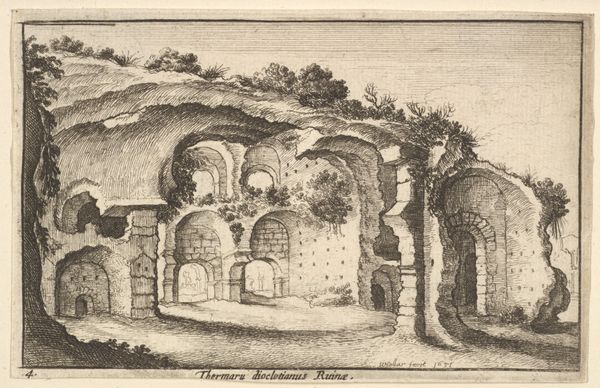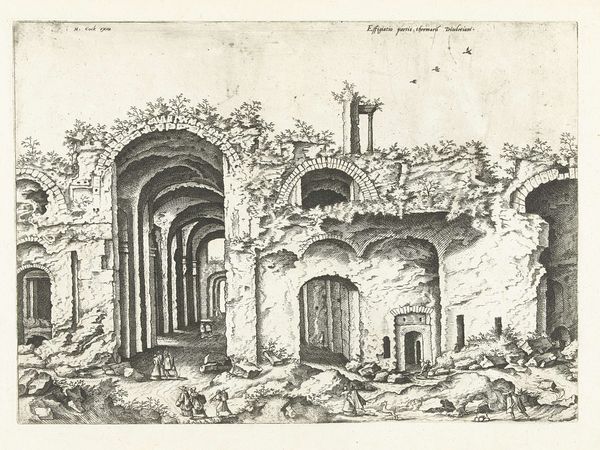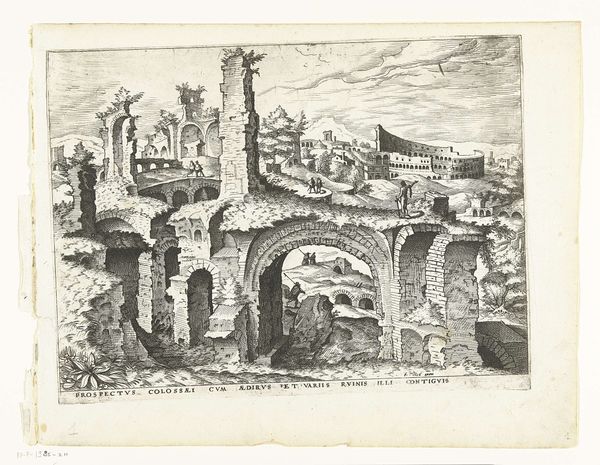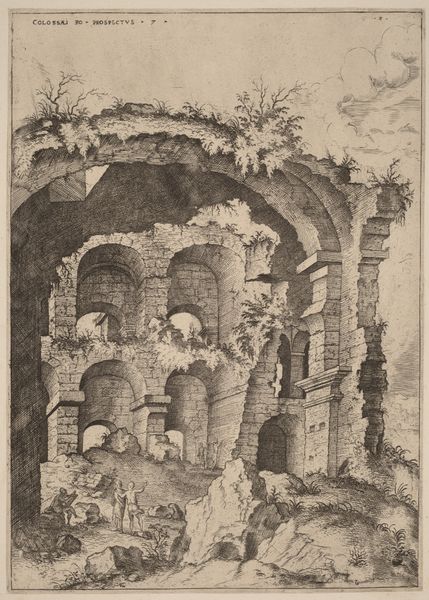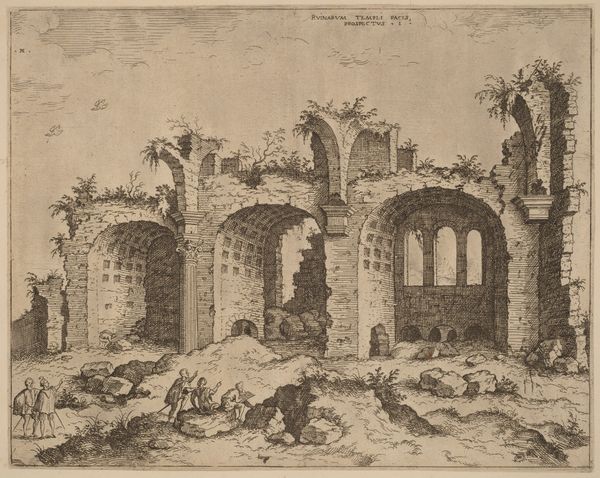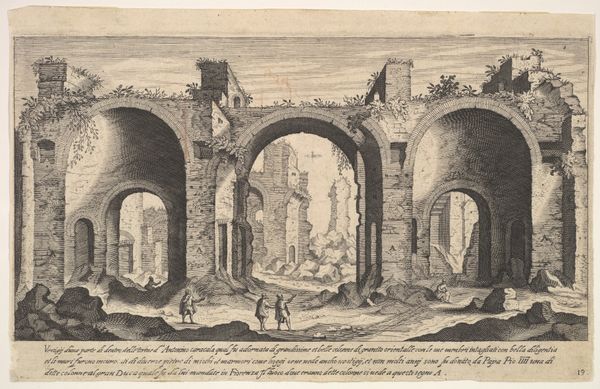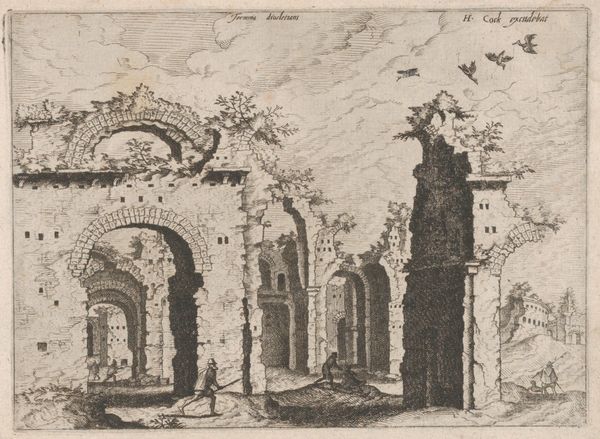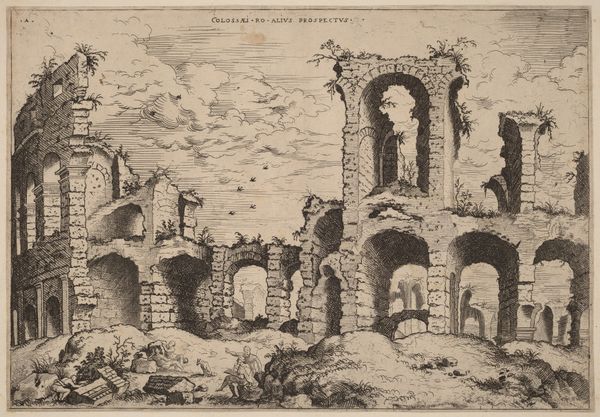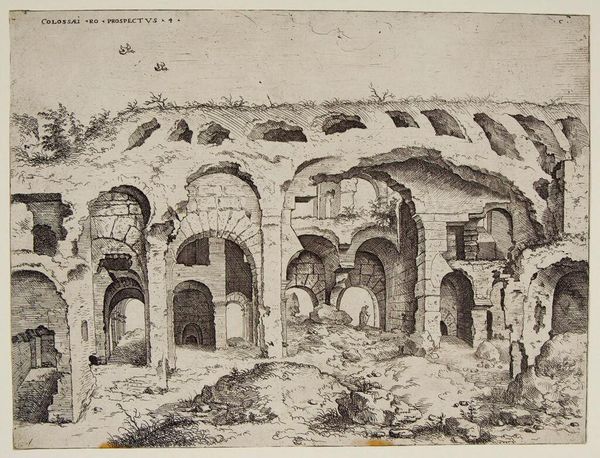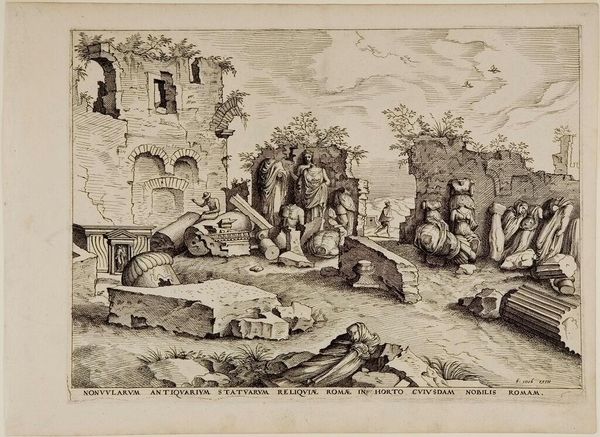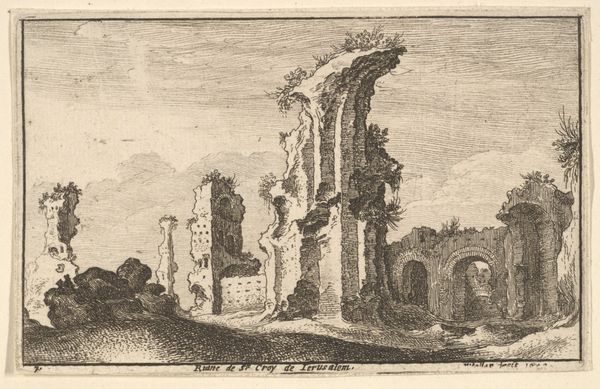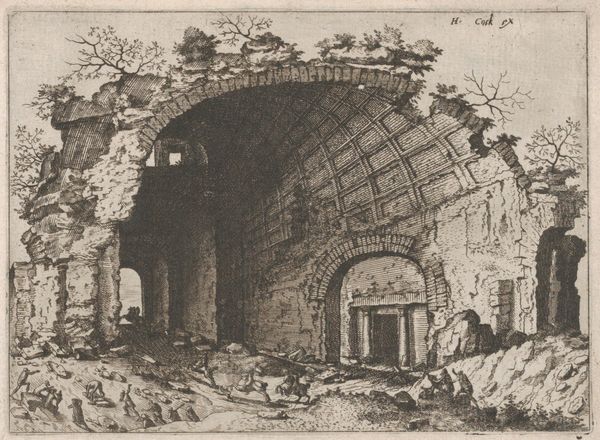
Ruins with Arched Vaults, from the series Roman Ruins and Buildings 1562
0:00
0:00
drawing, print, engraving
#
drawing
# print
#
landscape
#
romanesque
#
cityscape
#
history-painting
#
engraving
Dimensions: Sheet: 7 3/16 × 9 3/8 in. (18.3 × 23.8 cm)
Copyright: Public Domain
Curator: Right now we are looking at “Ruins with Arched Vaults, from the series Roman Ruins and Buildings,” an engraving by Johannes van Doetecum I created in 1562. What is your first impression? Editor: Crumbling. Hauntingly beautiful, yes, but absolutely crumbling. Look at how nature is slowly reclaiming what was once a symbol of power and order. Vines creeping over the arches, plants sprouting from the stonework… it feels like time itself is breathing down my neck. Curator: That's quite evocative. Decay is definitely a central theme. Ruins like these were potent symbols for 16th-century viewers, prompting contemplation on the transience of earthly power and the cyclical nature of history. The Romanesque style itself carries so many connotations. Editor: Absolutely! And it makes you wonder, doesn’t it? What stories these stones could tell, if they only could. Those tiny figures in the foreground—they look so small, so insignificant against this backdrop of fallen grandeur. They could be anyone, anywhere, just trying to find some shelter among the ghosts. Curator: Perhaps reflecting the era’s obsession with the rediscovery of classical antiquity. See how the artist has captured the scale of the ruins. It suggests a sense of awe, maybe even intimidation. This engraving would circulate among scholars, artists, and collectors, feeding a renewed interest in Roman history and architecture. Editor: The light's fantastic too! The way it hits those broken edges, carving out the texture… it is beautiful in its sadness, like an old black and white photograph, holding secrets you wish you could unravel. It also gives depth into the place like if it was infinite, as ruins always make you wonder about this feeling of vastness and the absence of boundaries... Curator: An apt observation, considering that prints like these facilitated the dissemination of ideas and visual culture. The arches as well bring up the Roman aesthetic, the repetition, their geometry in the middle of natural, organic desolation of the plants growing above the top. Editor: Yeah... This print captures a dialogue, doesn't it? A silent but forceful discussion between nature, history, and us—the observers standing at the edge of time. Curator: Indeed, and a reminder that even the mightiest empires eventually return to dust. Editor: Right, thanks to Johannes van Doetecum for sharing that reflection!
Comments
No comments
Be the first to comment and join the conversation on the ultimate creative platform.
